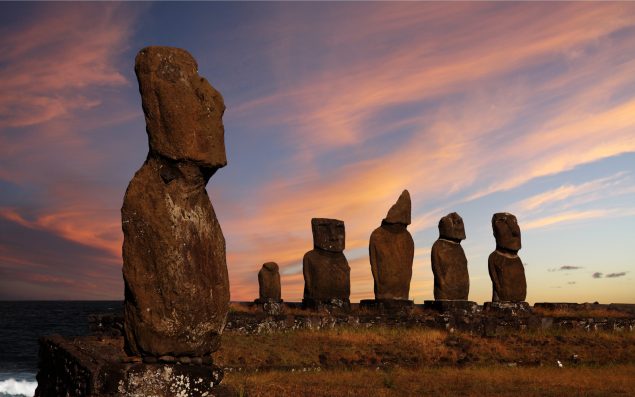This Museum Is Returning Human Remains A Norwegian Explorer Took From Easter Island

In the 1950s, a Norwegian explorer and anthropologist named Thor Heyerdahl took artifacts and human remains from Easter Island during his trans-Pacific raft expeditions. Now, the remains are being returned to the island by the Kon-Tiki Museum in Oslo, Norway.
Easter Island is a remote volcanic island that is known for its archaeological sites, particularly its hundreds of moai—monumental statues of human figures carved centuries ago. Its native name is Rapa Nui, in honor of the first people to inhabit the remote Chilean island in the Pacific.
A group of Easter Island and Chilean officials took part in a ceremony at the museum to celebrate the return of the artifacts. The items that were returned included skulls from the Rapa Nui people called Ivi Tepuna, along with sculpted stones.
“My grandfather would be proud of what we are about to accomplish,” said Liz Heyerdahl, the explorer’s granddaughter and director of the Kon-Tiki Museum.
Four representatives of Easter Island slept next to the remains in the museum overnight as part of a ritual aimed at awakening the spirits of the dead. They spoke to the spirits in their local language and cooked a meal for them.
Ceremonies are also planned for when the remains arrive on Easter Island. They will be brought to eight holy sites before being buried.
Heyerdahl became famous in 1947 when he and a crew of five men sailed on a log raft named Kon-Tiki from Peru to Polynesia in 101 days.
He had been seeking to prove his theory that seafarers from South America settled the South Sea Islands.
In 1955, he brought back 5,600 artifacts from Easter Island with the understanding that they would eventually be returned.

Galina Barskaya – stock.adobe.com – illustrative purposes only – pictured above are the famous heads on Easter Island
Some of the items were returned to the island in 1986 and 2006. Now, it is the third time that objects will be returned.
In 2019, an agreement was signed in Santiago, Chile, announcing the planned return of thousands of items. However, the Covid-19 pandemic halted all activities in 2020.
“The repatriation is a fulfillment of my father’s promise to the Rapa Nui authorities that the objects would be returned after they had been analyzed and published,” said Thor Heyerdahl Jr. He accompanied his father on the 1955 expedition when he was just 17 years old and recently passed away this year.
Heyerdahl Sr. died in 2002 at the age of 87. He had wanted to prove that the Polynesian islands could have been settled by ancient South American people traveling on light balsa rafts and not by settlers from South Asia.
A DNA analysis has shown that Heyerdahl was only partly right. The first people to settle Rapa Nui were Polynesians from the Western Pacific.
But people on Rapa Nui do carry about four to 11 percent of DNA from South American Indigenous populations, meaning that they had crossed paths sometime between 1250 and 1430.
Sign up for Chip Chick’s newsletter and get stories like this delivered to your inbox.
More About:News





